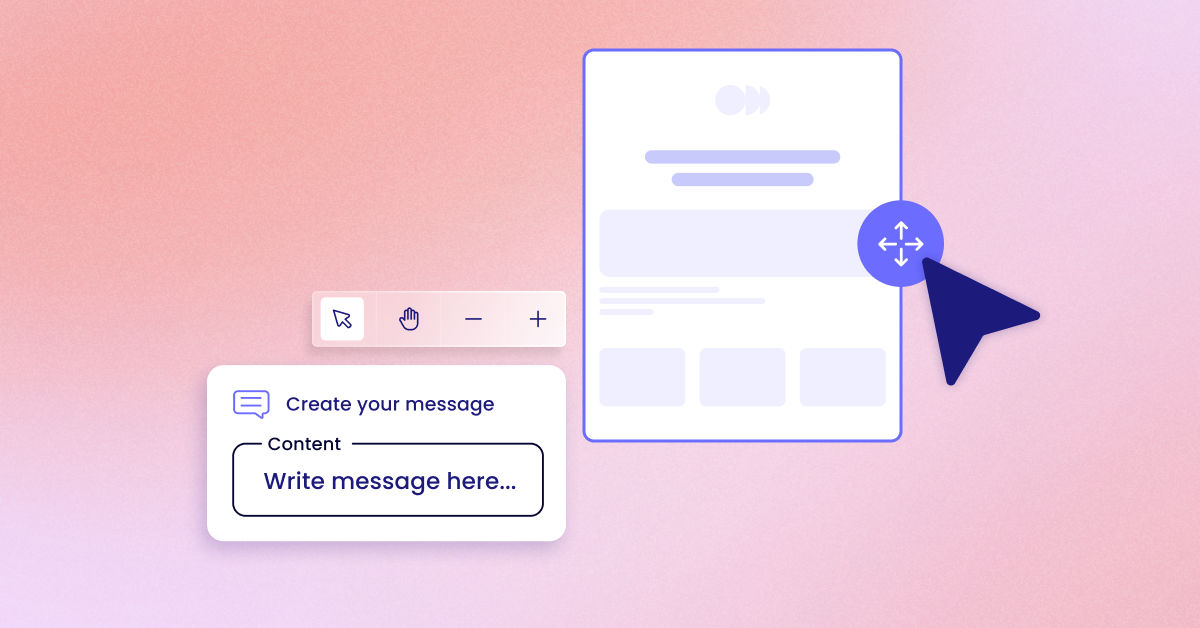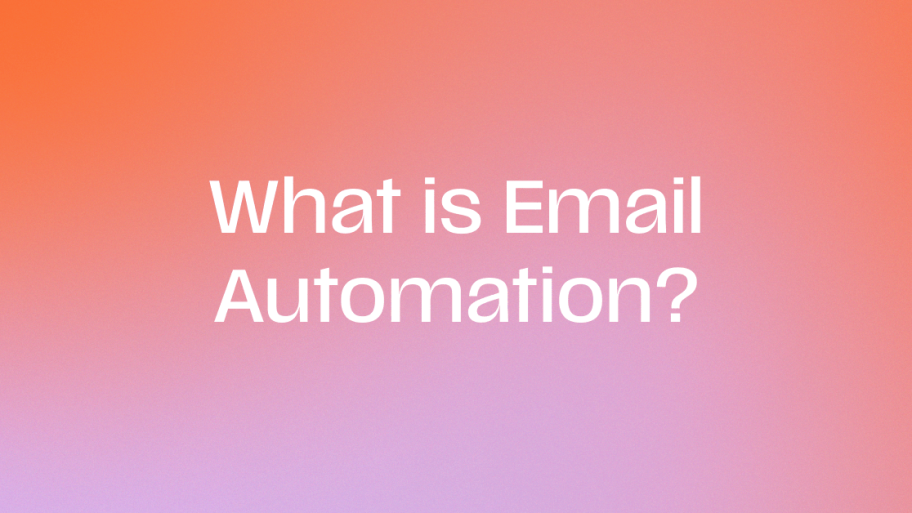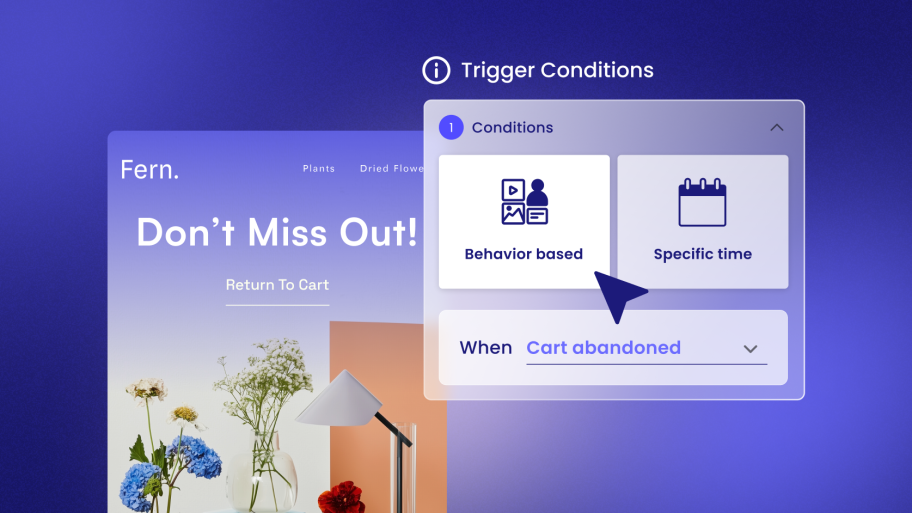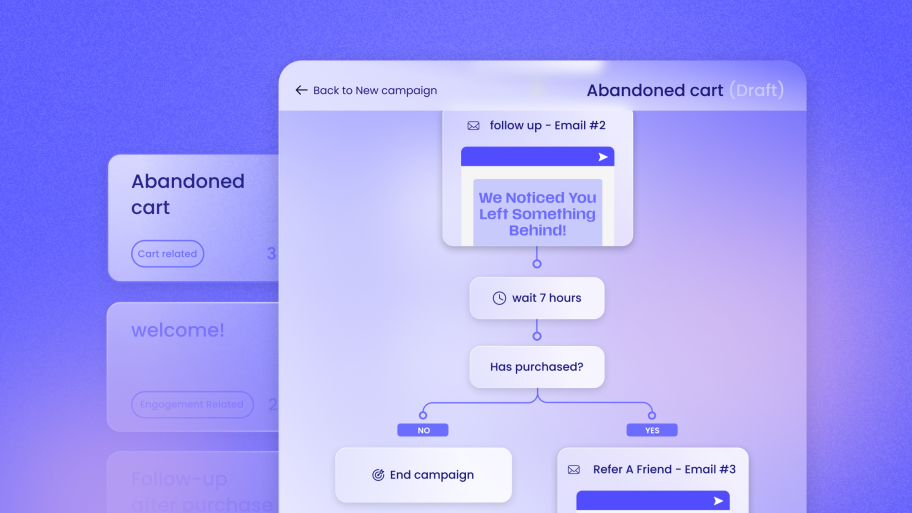This guide explores the strategies, types, and examples that drive sales and build lasting customer relationships. We’ll also look at how web creators can use these principles to deliver immense value to their retail clients, transforming their services from a one-time build into an engine for ongoing growth.
Understanding the Core of Retail Marketing
At its heart, retail marketing is about connecting the right products with the right people at the right moment. It’s a dynamic field that has evolved significantly but still hinges on a few fundamental principles.
What is Retail Marketing?
Retail marketing encompasses all the strategies and tactics retailers use to attract customers and drive sales. Think of it as the entire journey from making a customer aware of your brand to the final purchase and beyond. This process is often guided by the classic “Four Ps” of marketing, tailored for the retail environment:
- Product: This is the foundation. It’s about stocking the items your target audience wants and needs. Effective retail marketing starts with a deep understanding of customer demand and product-market fit.
- Price: This involves setting a price that is both competitive in the marketplace and profitable for the business. Pricing strategy can also be a promotional tool, with discounts, bundles, and seasonal sales used to attract buyers.
- Place: This refers to where customers encounter and purchase your products. In the past, this was a physical storefront. Today, “place” is a combination of brick-and-mortar locations, eCommerce websites, social media storefronts, and third-party marketplaces.
- Promotion: These are the activities you use to communicate with your audience. Promotion includes everything from digital advertising and email campaigns to in-store signage and customer service.
So, why does this matter? Because effective retail marketing is what builds brand awareness, drives foot traffic to physical stores, directs visitors to online shops, and ultimately converts curious browsers into loyal customers.
The Modern Retail Landscape: Bricks and Clicks
The line between online and offline shopping has blurred into a single, continuous experience. Today’s consumers move effortlessly between channels. They might browse for a product on their phone while standing in a competitor’s store or see an item on social media and decide to pick it up in person.
In fact, over half of all consumers now expect to use a mix of in-store and online channels when they shop. This creates a new challenge for retailers: how to connect with and retain customers in an environment flooded with choices. With rising customer acquisition costs and new data privacy regulations changing the advertising game, building a direct relationship with your audience is more critical than ever.
Key Types of Retail Marketing
Modern retail strategies are rarely one-dimensional. They are a carefully crafted blend of different marketing types, each playing a unique role in the customer journey. Understanding these categories helps you build a more comprehensive and effective plan.
In-Store Marketing
Even with the rise of eCommerce, the physical store remains a powerful marketing tool. In-store marketing focuses on enhancing the customer’s experience from the moment they walk through the door.
- Visual Merchandising: This is the art of creating compelling product displays that catch the eye and tell a story. Think about well-dressed mannequins in a clothing store, themed displays for holidays, or using color blocking to make a wall of products pop. The goal is to make the shopping experience more engaging and intuitive.
- Signage and Point-of-Sale (POS) Displays: Clear signage guides customers through the store, highlights promotions, and provides essential product information. Point-of-sale displays—those racks of tempting items near the checkout counter—are a classic tactic for encouraging impulse buys.
- In-Store Events and Experiences: Hosting workshops, product demonstrations, or exclusive member events can transform a store from a place of transaction into a community hub. These experiences drive foot traffic, build brand loyalty, and create memorable interactions.
- Customer Service: Your staff is your front line. Well-trained, knowledgeable, and friendly employees act as brand ambassadors. They can answer questions, offer personalized recommendations, and turn a simple shopping trip into a positive, lasting impression.
Digital Marketing for Retail
Digital marketing opens the door to reaching customers wherever they are, long before they decide to shop. It’s an essential component of any modern retail strategy.
- Email and SMS Marketing: These channels provide a direct line to your most engaged customers. While newer channels emerge, 60% of consumers still prefer email for receiving promotions. Meanwhile, SMS marketing offers unparalleled immediacy, with 90% of messages being read within three minutes. Together, they are a powerful duo for announcing sales, sharing new products, and nurturing customer relationships.
- Social Media Marketing: Social platforms are no longer just for connecting with friends; they are bustling marketplaces. Brands use social media to build communities, showcase their brand personality, run targeted ads, and even sell products directly through integrated shopping features.
- Search Engine Optimization (SEO): With 68% of all online experiences beginning on a search engine, SEO is non-negotiable. For retailers, this means optimizing their website, product pages, and blog content so they appear when a potential customer searches for what they sell. It’s about attracting qualified visitors who have a clear intent to buy.
- Paid Advertising (PPC & Social Ads): Paid ads on platforms like Google (Pay-Per-Click) and social media allow retailers to target specific demographics, interests, and behaviors. This is a powerful way to reach new audiences, promote time-sensitive offers, and drive traffic to specific landing pages.
Omnichannel Marketing
Omnichannel marketing takes the “bricks and clicks” model a step further. It’s not just about being present on multiple channels; it’s about creating a single, unified customer experience across all of them.
An omnichannel strategy ensures that a customer’s journey is seamless, whether they start on a social media ad, browse on your website, and finish the purchase in your physical store. Popular omnichannel tactics include:
- Buy Online, Pick Up In-Store (BOPIS)
- In-store returns for online purchases
- Using a mobile app to check in-store inventory
The bottom line? Customers now expect a consistent brand experience everywhere they interact with you, and an omnichannel approach is how you deliver it.
Essential Retail Marketing Strategies to Drive Growth
Knowing the types of marketing is one thing; implementing them effectively is another. Here are four essential strategies that successful retailers use to attract customers, drive sales, and foster long-term loyalty.
Strategy 1: Build a Powerful Online Presence
Your online presence is your digital storefront, open 24/7 to the world. It’s often the first impression a customer has of your brand, and it needs to be strong, discoverable, and trustworthy.
The Role of an SEO-Optimized Website
Your website is the heart of your digital retail operations. It’s more than just an online catalog; it’s your brand’s flagship store in the digital realm. To be effective, it must be easily found by potential customers. This is where SEO comes in.
A successful SEO strategy for retail involves optimizing product descriptions, collection pages, and overall site structure to rank higher in search results for relevant queries. When someone searches for “men’s leather boots,” you want your products to appear on the first page. Even small improvements in search rankings can have a massive impact, as the top organic result gets ten times more clicks than the tenth result.
For web creators, building a beautiful website is only half the job. The real value comes from creating a site that is architected for discovery—one that actively attracts the right kind of traffic and is optimized to convert that traffic into sales.
Leveraging Third-Party Marketplaces
Relying solely on direct traffic to your website is no longer enough. Customer acquisition costs are rising, and it’s increasingly difficult to cut through the noise with digital advertising alone. Third-party marketplaces offer a powerful solution by giving you access to their massive, built-in audiences. In fact,
more than 60% of all product searches now begin on these platforms.
When you sell on third-party platforms, their traffic becomes your traffic. Key marketplaces to consider include:
- Google Shopping: This platform acts as a powerful retail search engine, displaying both paid and organic product listings from a wide range of sellers. Its visual format makes it easy for shoppers to compare products and prices at a glance.
- Facebook & Instagram Shops: These tools allow brands to create a native storefront directly on their social media profiles. This lets customers browse and purchase products without ever leaving the app, creating a frictionless shopping experience.
- Walmart Marketplace: As one of the largest eCommerce players in the U.S., Walmart.com offers access to over 120 million monthly shoppers. It is a curated platform, which means seller competition can be lower and brand authority higher compared to more open marketplaces.
On these crowded platforms,
social proof is your greatest asset. When a customer encounters your brand for the first time, a strong collection of positive reviews and ratings is often the deciding factor that builds trust and encourages a purchase.
Strategy 2: Master Direct Communication with Email and SMS
While social media and search are great for discovery, email and SMS marketing are your channels for building deep, lasting relationships. They allow you to create an owned audience that you can communicate with directly, away from the unpredictable algorithms of other platforms.
Why Email & SMS Are Cornerstones of Retail Marketing
Email and SMS are proven workhorses in retail marketing, consistently delivering high engagement and a strong return on investment. A remarkable
77% of marketers reported higher email engagement over the past year, showing its enduring power.
The key to their success is personalization. These channels allow you to segment your audience and send highly targeted messages based on their past behavior, purchase history, and stated preferences. This ability to deliver the right message to the right person at the right time is what turns one-time buyers into repeat customers.
Automating for Success: Key Campaigns to Set Up
The real power of email and SMS comes from automation. By setting up automated workflows, or “flows,” you can ensure customers receive timely and relevant communications without manual effort. Some of the most effective automated campaigns for retail include:
- Welcome Series: When someone new subscribes, a series of automated emails or texts can introduce them to your brand, showcase your best-selling products, and offer a small incentive to make their first purchase.
- Abandoned Cart Reminders: A significant percentage of online shopping carts are abandoned before checkout. An automated reminder—perhaps sent an hour after abandonment—can recover a substantial portion of these potentially lost sales.
- Post-Purchase Follow-ups: After a customer makes a purchase, you can automate a thank you message, provide shipping updates, and, a week or two later, request a product review. This keeps the customer engaged and helps you gather valuable social proof.
- Re-engagement Campaigns: If a customer hasn’t purchased in a while, a “we miss you” campaign with a special offer can be an effective way to win them back.
A Web Creator’s Toolkit for Client Success
For web creators, offering these services can seem daunting. Your clients need this functionality, but managing a patchwork of external marketing platforms, plugins, and APIs can be a headache. It often leads to
integration friction, data syncing issues, and confusing workflows.
This is where a WordPress-native approach offers a clear advantage. A tool like Send by Elementor was designed to solve this exact problem. It’s an all-in-one communication toolkit built specifically for WordPress and WooCommerce, integrating seamlessly into the dashboard you and your clients already know.

Instead of juggling different services, you get Email, SMS, automation, and analytics consolidated in one place. This allows you to set up crucial flows like Abandoned Cart or Welcome Series effortlessly, often using pre-built templates. Best of all, you can prove your value with real-time analytics that track revenue and engagement right inside the WordPress dashboard, making it easy to show clients a clear return on their investment.
Strategy 3: Cultivate Customer Loyalty and Retention
In a competitive market, focusing on customer retention is one of the smartest moves a retailer can make. It is far more cost-effective to encourage an existing customer to buy again than it is to acquire a new one from scratch.
The Shift from Acquisition to Retention
The goal is to move beyond simple, transactional relationships and build emotional loyalty. This happens when customers feel a genuine connection to your brand’s values and mission. A strong majority of consumers—81%—say they actively want to form a relationship with the brands they buy from. It’s up to the retailer to provide the framework for that relationship to grow.
Building Effective Loyalty & Referral Programs
Loyalty programs are a structured way to recognize and reward your best customers. Rather than just offering random discounts, these programs incentivize repeat purchases and other valuable actions, such as writing a review or sharing your brand on social media.
Effective programs often include:
- Points Systems: Customers earn points for every dollar spent, which can be redeemed for discounts or free products.
- Tiered Programs: As customers spend more, they unlock new tiers with escalating benefits, like free shipping, early access to sales, or exclusive gifts.
- Referral Incentives: Rewarding existing customers for bringing new customers to your brand is a powerful way to drive word-of-mouth marketing.
Tools like Yotpo Loyalty & Referrals provide the flexibility for brands to build these kinds of tailored programs that drive repeat business and turn happy customers into active advocates.
The Power of Subscriptions
For certain products, a subscription model can be a game-changer. It creates a predictable, recurring revenue stream and locks in customer loyalty. Smart brands are evolving this model from a simple “subscribe and save” to a more robust
“membership” experience. This involves offering subscribers added value beyond the product itself, such as exclusive access to content, members-only events, or personalized consultations. Tools like the Subi Subscriptions App can help retailers launch and manage these programs effectively within their stores.
Strategy 4: Harness the Power of Social Proof and User-Generated Content (UGC)
In retail, what other people say about your products is far more persuasive than what you say about them yourself. Social proof, in the form of reviews, ratings, and customer photos, builds the trust and confidence needed to drive a purchase.
Why Customer Content is So Persuasive
The power of user-generated content lies in its authenticity. When a potential buyer sees that real people are happily using your product, it validates their choice. The statistics are compelling:
93% of U.S. consumers report that online reviews influence their purchasing decisions.
Furthermore, UGC provides a rich, continuous stream of fresh marketing content. Customer photos can be repurposed for social media posts, product pages, and email newsletters, adding a layer of relatability that professional marketing assets often lack.
Collecting and Showcasing Reviews
To leverage social proof, you first need to collect it. Make it as easy as possible for customers to leave feedback with post-purchase email and SMS requests. Then, display that content prominently where it will have the most impact:
- On product pages, right next to the “Add to Cart” button.
- On your homepage, to build immediate trust with new visitors.
- During the checkout process, to reduce last-minute hesitation.
Platforms like Yotpo Product Reviews are designed to help brands collect and showcase high-quality customer feedback at scale, using smart features to gather more detailed and helpful reviews.
Leveraging Creator-Led Commerce and Influencer Marketing
Beyond your immediate customers, you can tap into the power of creators and influencers. This form of marketing involves partnering with creators whose audience aligns with your target market. The magic of creator-led commerce lies in its relatability; a recommendation from a trusted creator feels more like advice from a friend than an advertisement.
The rise of trends like #TikTokMadeMeBuyIt shows just how powerful this can be, and social platforms are leaning in with integrated shopping features that make it easy for users to buy products seen in creator content. For brands looking to formalize these partnerships, tools like Shopify Collabs provide a streamlined way to manage affiliate links, track sales, and pay creators.
Measuring Success: Key Metrics for Retail Marketers
You can’t improve what you don’t measure. In retail marketing, making data-driven decisions is the key to optimizing your efforts and maximizing your return on investment. Tracking the right Key Performance Indicators (KPIs) tells you what’s working, what’s not, and where to focus your resources.
Here are some of the most important metrics every retailer should monitor:
Table: Key Retail Marketing KPIs
| Metric | What it Measures | Why it’s Important | Tools to Use |
| Conversion Rate | The percentage of website or store visitors who complete a purchase. | This is the ultimate measure of how effectively your marketing and site experience are turning browsers into buyers. | Google Analytics, Shopify Analytics |
| Customer Lifetime Value (CLV) | The total profit you can expect to earn from a single customer over the course of your relationship. | CLV shifts the focus from one-off sales to long-term profitability and customer retention. | CRM, Loyalty Platforms |
| Average Order Value (AOV) | The average amount of money a customer spends each time they place an order. | Increasing AOV through upselling and cross-selling is a direct way to boost revenue without needing more customers. | eCommerce Platform Analytics |
| Cart Abandonment Rate | The percentage of shoppers who add items to their online cart but leave without completing the purchase. | A high rate often points to friction in your checkout process, unexpected costs, or a lack of trust. | Analytics Platforms, Send by Elementor |
| Cost Per Acquisition (CPA) | The total cost of marketing and advertising required to acquire one new customer. | This metric is crucial for measuring the efficiency of your ad spend and ensuring your acquisition efforts are profitable. | Ad Platforms, Analytics |
| Email/SMS Engagement | Metrics like open rate, click-through rate, and revenue per message. | These KPIs tell you how well your direct communication is resonating with your audience and driving action. | Send by Elementor, Yotpo |
Understanding Your Customer Better with Analytics
Metrics provide the “what,” but true insight comes from understanding the “why.” To do this, you need to go beyond basic KPIs and analyze customer behavior.
Tools that offer session recordings and dynamic heatmaps allow you to watch anonymized recordings of how real users navigate your website. You can see where they click, how far they scroll, and where they get stuck. This qualitative data is invaluable for identifying areas of friction and opportunities for improvement.
Additionally, you can gather direct customer feedback through interactive quizzes and surveys. A product recommendation quiz can help a customer find the perfect item while also giving you valuable data on their preferences. Post-purchase surveys can uncover insights about the shopping experience that you might have otherwise missed. Platforms like Lucky Orange provide session recording and heatmap analysis, while tools like Octane AI specialize in creating engaging quizzes that personalize the shopping experience.
The Web Creator’s Opportunity: Building Value Beyond the Build
For web creators and agencies, the modern retail landscape presents a massive opportunity. Your role can evolve from that of a one-time project provider to a long-term strategic partner who actively contributes to a client’s growth.
Shifting from One-Off Projects to Recurring Revenue
The traditional web design project has a definitive end. Once the site is launched, the project is complete, and so is the revenue stream. But your clients’ needs don’t stop there. They need ongoing marketing support to drive traffic, engage customers, and increase sales, yet they often lack the in-house expertise or tools to do it effectively.
This is your opening. By expanding your services to include marketing management, you can create a recurring revenue model that is more stable and scalable. You become an indispensable part of their team, fostering deeper, more profitable client relationships.
How to Position Marketing Services to Your Clients
Making this shift requires a strategic approach. You don’t want to overwhelm clients with a complex menu of services. Instead, focus on providing clear, tangible value.
- Start Simple: You don’t need to offer everything at once. Begin with a single, high-impact service that delivers quick wins. For a WooCommerce store, setting up an
automated abandoned cart flow is a perfect starting point. It addresses a clear pain point (lost sales) and provides a measurable result. - Focus on Business Goals: Frame your services in terms your clients understand: business growth. Instead of selling “email automation,” sell “a system to recover lost sales.” Instead of “SMS marketing,” sell “a way to announce flash sales that drives immediate traffic.”
- Use a WordPress-Native Toolkit: When you pitch these services, explain the benefits of using a tool that’s built for their existing ecosystem. A solution like
Send by Elementor is an easy sell because it integrates seamlessly into the WordPress dashboard they already use. There are
no complex APIs to manage and no fears of site slowdowns or plugin conflicts. It simplifies the entire process by keeping powerful communication tools right inside WordPress. - Show, Don’t Just Tell: The ultimate key to retaining marketing clients is proving your worth. This is where the right tool becomes your best friend. With Send by Elementor’s
clear, real-time analytics, you can generate reports directly from the WordPress dashboard that show exactly how much revenue your campaigns are generating. This data-backed proof of ROI makes your value undeniable and solidifies your role as a growth partner.
Conclusion: Tying It All Together
Successful retail marketing in today’s world is a sophisticated blend of art and science. It requires an integrated approach that merges the tangible experience of in-store shopping with the vast reach and precision of digital strategies. The ultimate goal is no longer just to process transactions but to build genuine, lasting relationships with customers.
Whether you are driving foot traffic with an in-store event, recovering a sale with an automated text message, or building community on social media, every action should be focused on delivering value to the customer. For retailers, choosing the right strategies and tools to align with business goals is the key to navigating the competitive landscape.
For web creators, the path forward is equally clear. The demand for effective digital marketing is immense, and you are perfectly positioned to meet it. By leveraging integrated communication toolkits designed for your native WordPress workflow, you can expand your offerings beyond the initial website build. You can provide your clients with the engine they need for growth, deliver measurable results that prove your value, and in doing so, build a stronger, more profitable, and more sustainable business for yourself.




